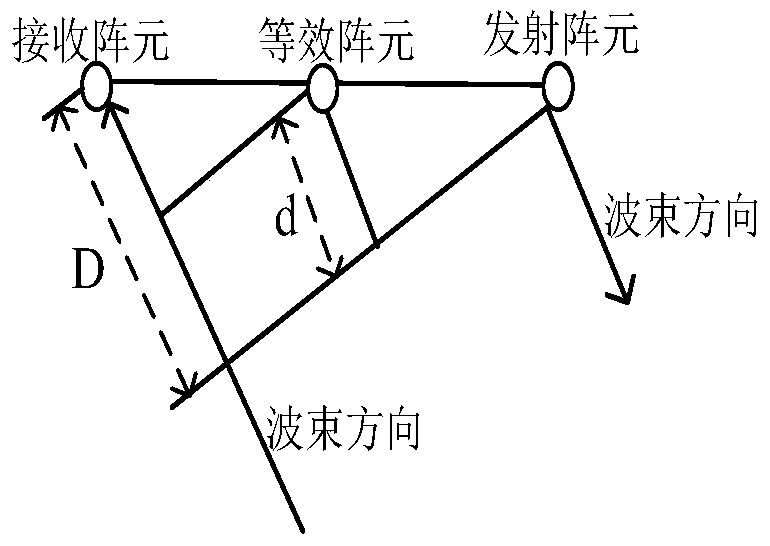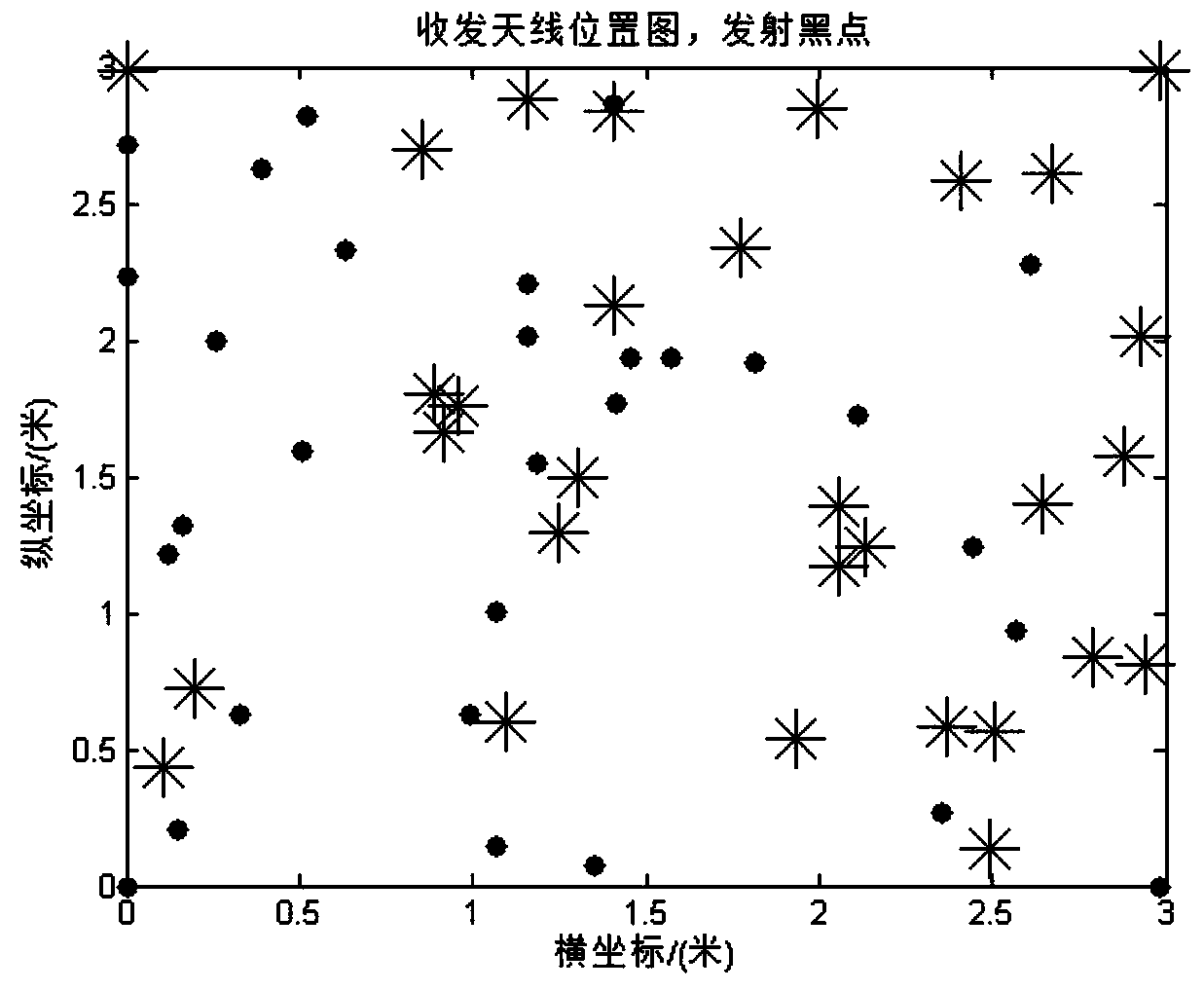A Genetic Algorithm-Based Method for Optimizing the Array Element Position of Mimo-SAR Area Array Antenna
A technology of MIMO-SAR and genetic algorithm, which is applied in the field of multi-input multi-output synthetic aperture radar imaging and radar, and can solve the problems of genetic algorithm population monotony, premature convergence, optimization problems that cannot reach the optimal solution, etc.
- Summary
- Abstract
- Description
- Claims
- Application Information
AI Technical Summary
Problems solved by technology
Method used
Image
Examples
Embodiment Construction
[0081] The present invention mainly adopts the method of simulation experiment for verification, and all steps and conclusions are verified correctly on MATLAB2013a. The specific implementation steps are as follows:
[0082] Step 1. MIMO-SAR area array parameter initialization:
[0083] Initialize the MIMO-SAR area array parameters include: the carrier wavelength λ=0.03m of the radar transmitting signal; the propagation speed of the electromagnetic wave in the air, denoted as C=3×10 8 Hz; the minimum interval between array elements, dc=0.015m; the number of transmitting array elements, TN=30; the number of receiving array elements, RN=30; the total number of array elements, SN=60; the pitch angle of the target scattering point, θ 0 = 45 degrees; the azimuth angle of the target scattering point, According to the multiple-input multiple-output synthetic aperture radar imaging system scheme, the initialization parameters of the MIMO-SAR array are all known.
[0084] Step 2. G...
PUM
 Login to View More
Login to View More Abstract
Description
Claims
Application Information
 Login to View More
Login to View More - R&D
- Intellectual Property
- Life Sciences
- Materials
- Tech Scout
- Unparalleled Data Quality
- Higher Quality Content
- 60% Fewer Hallucinations
Browse by: Latest US Patents, China's latest patents, Technical Efficacy Thesaurus, Application Domain, Technology Topic, Popular Technical Reports.
© 2025 PatSnap. All rights reserved.Legal|Privacy policy|Modern Slavery Act Transparency Statement|Sitemap|About US| Contact US: help@patsnap.com



